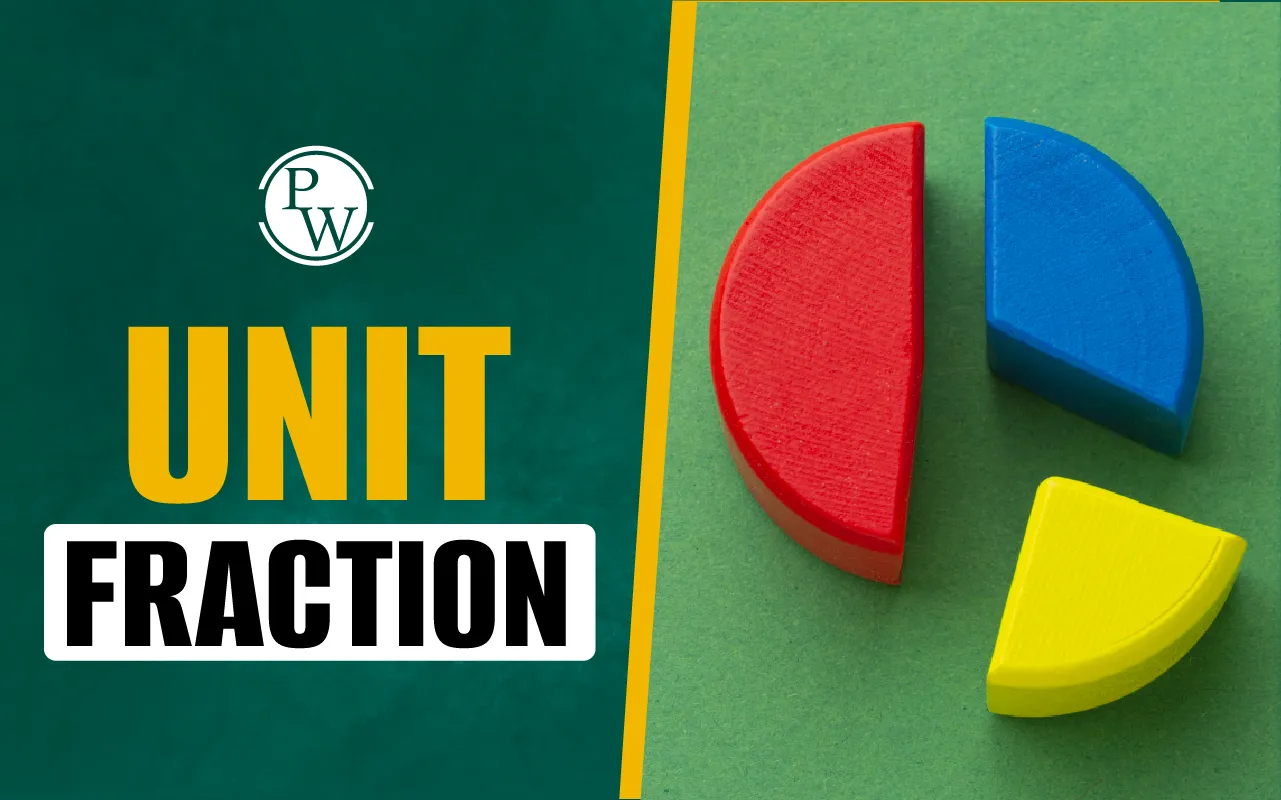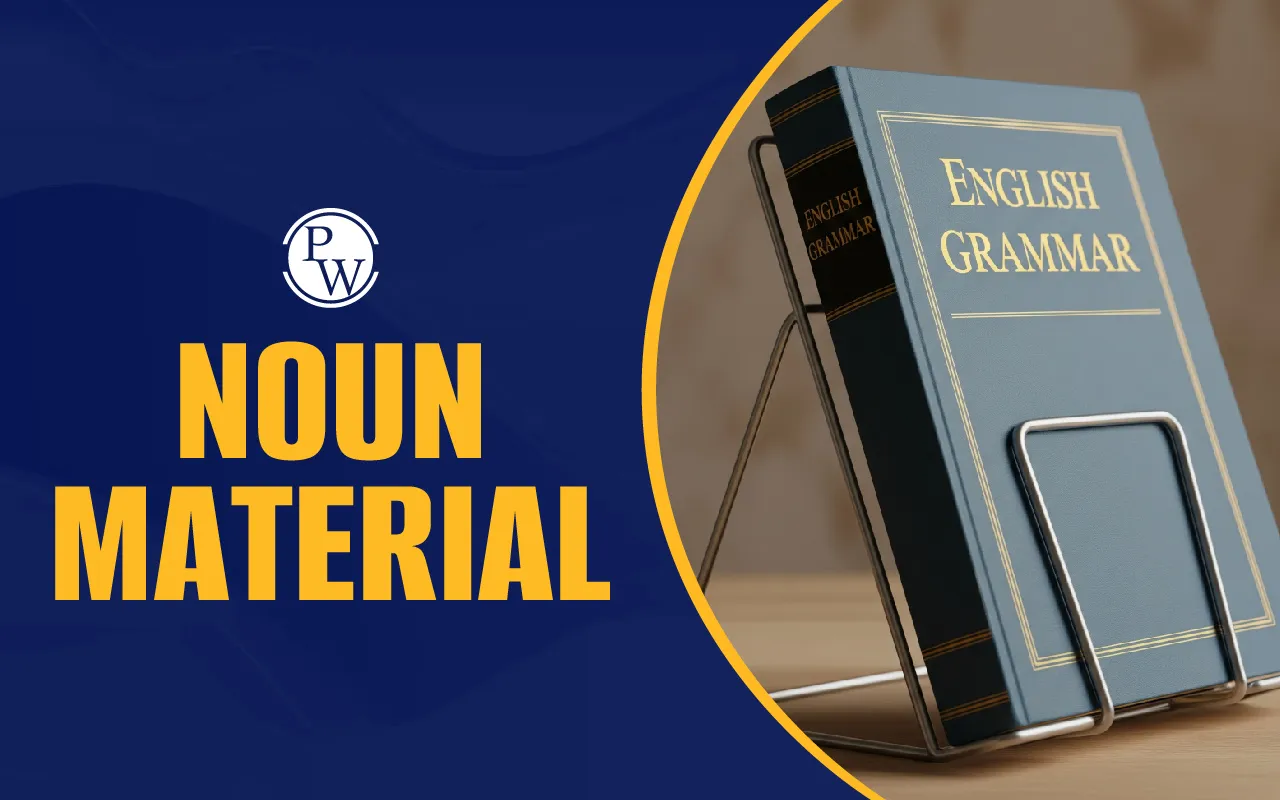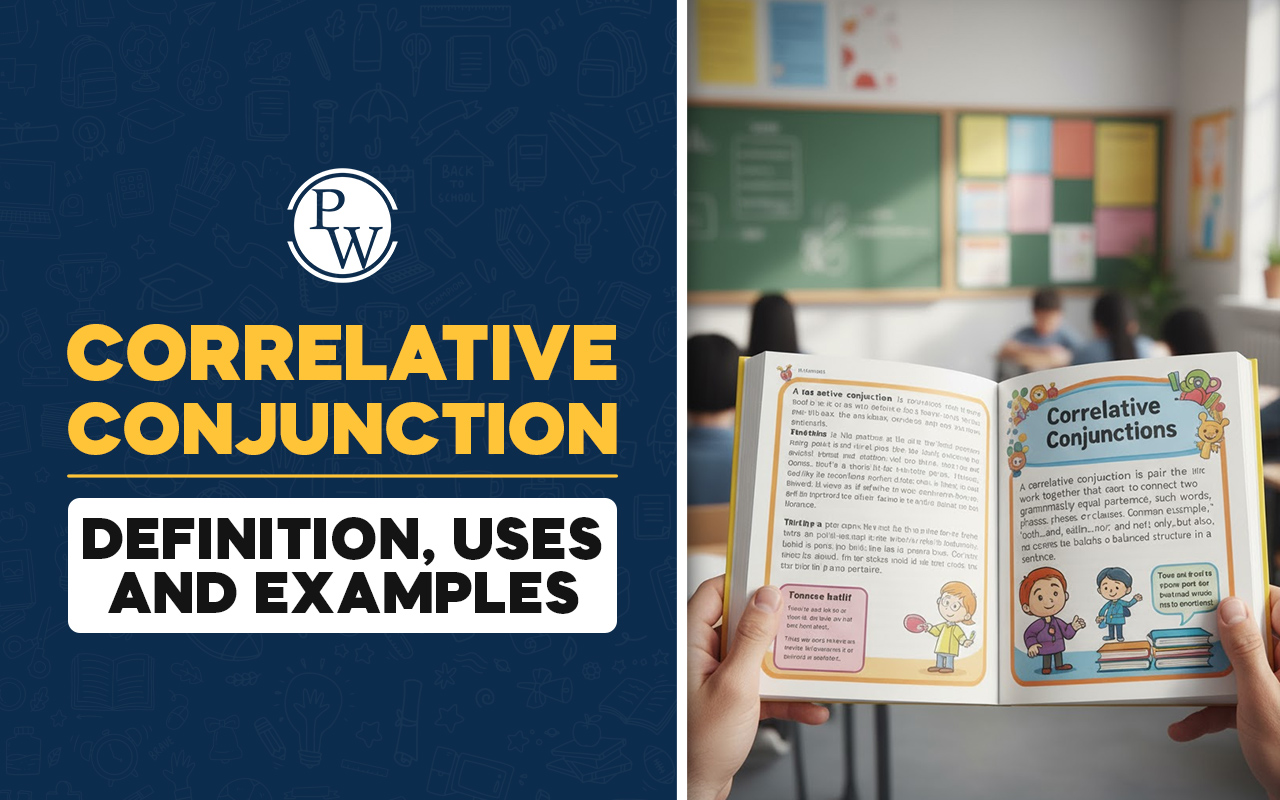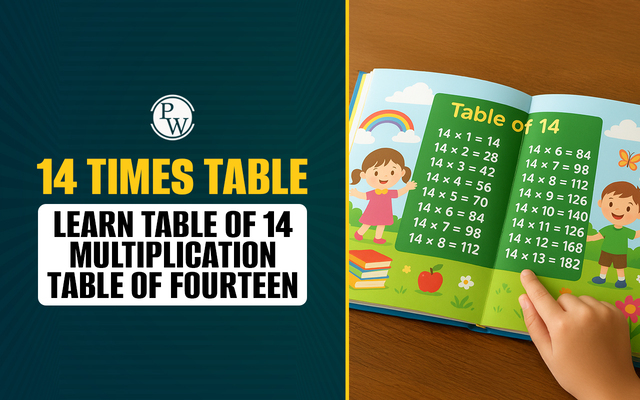
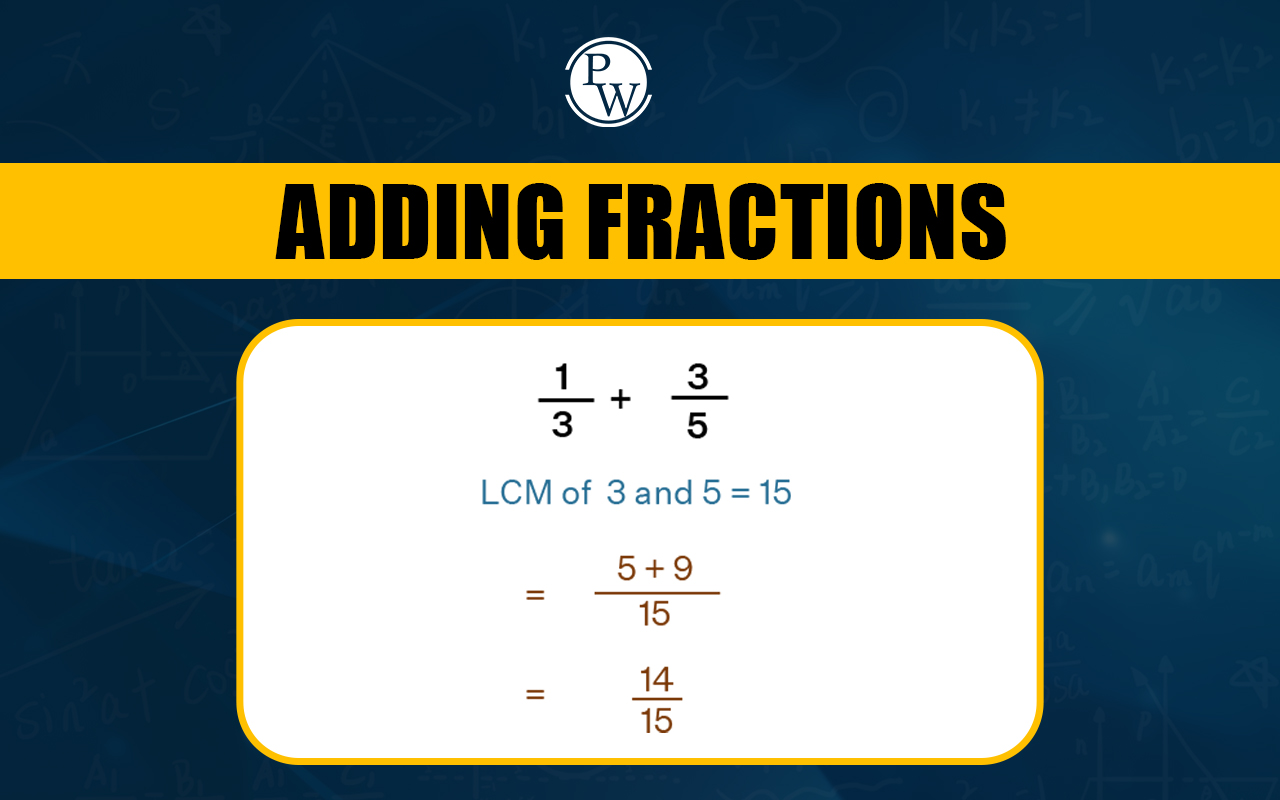
Adding Fractions: Adding fractions involves combining numbers that are expressed as parts of a whole, with a numerator on top and a denominator below separated by a line.
The process is simple when the denominators (the bottom numbers) are the same you just add the numerators and keep the denominator unchanged. However, for fractions with different denominators you first need to find a common denominator by converting them into equivalent fractions. Once the fractions have the same denominator, their numerators can be added, and the sum is written over the common denominator making the process of adding fractions more manageable.What is Adding Fractions?
"Adding Fractions" refers to the process of combining two or more fractions to find their sum. It can be done in two scenarios: adding fractions with like denominators and adding fractions with unlike denominators. A fraction represents a part of a whole and consists of two components: the numerator (the part taken) on top and the denominator (the total number of equal parts) on the bottom. For example, if a cake is divided into 8 equal pieces and you take 3 the fraction representing the part taken is 3/8. When adding fractions, if the denominators are the same you simply add the numerators while keeping the denominator unchanged. However, for fractions with unlike denominators, you need to find a common denominator first usually by the LCM method. Once the denominators are equal, you can add the numerators and keep the common denominator in the result.How to Add Fractions?
Adding fractions involves combining parts of a whole. A fraction consists of two parts: a numerator (the part being considered) and a denominator (the total number of equal parts). The general form of a fraction is a/b, where 'a' is the numerator, and 'b' is the denominator. To add fractions follow these steps:Check if the denominators are the same : If the denominators are already the same, add the numerators directly and keep the common denominator. For example, in 1/4 + 2/4, you add the numerators (1 + 2) to get 3 and the common denominator remains 4, so 1/4 + 2/4 = 3/4.
If denominators are different : Find the least common denominator (LCD) and convert the fractions to equivalent fractions with this common denominator. After this, add the numerators and keep the denominator the same.
Simplify the result : If possible, reduce the fraction to its simplest form.
There are different scenarios for adding fractions:- Like fractions (same denominator): Example: 3/5 + 2/5.
- Unlike fractions (different denominators): Example: 1/3 + 1/4, where you need to find a common denominator.
- Adding a fraction and a whole number : Example: 1/2 + 3, where the whole number is converted to a fraction.
Adding Fractions with Like Denominators
When the denominators of two or more fractions are the same adding them is straightforward. In this case you simply add the numerators and keep the denominator unchanged. Here are the steps to add fractions with the same denominators:- Add the numerators : Add the values in the numerator.
- Keep the denominator the same : The denominator remains unchanged.
- Simplify the fraction : If possible, reduce the fraction to its simplest form.
Example : Add the fractions 5/6 and 7/6.
Since the denominators are same, therefore we can add the numerators directly. (5/6) + (7/6) = (5 + 7)/6 = 12/6 Simplify the fraction 12/6 = 2 Hence, the sum of ⅚ and 7/6 is 2.Adding Fractions with Unlike Denominators
When adding fractions with different denominators you cannot directly add the numerators. To perform the addition, you need to follow a series of steps to make the denominators the same. Steps to add fractions with different denominators:- Check the denominators : Identify if the denominators are different.
- Make the denominators the same : Find the least common multiple (LCM) of the denominators, and adjust each fraction to have the same denominator by multiplying both the numerator and the denominator by the appropriate value.
- Add the numerators : Once the fractions have the same denominator, add the numerators, keeping the common denominator.
- Simplify the fraction : If needed, simplify the resulting fraction.
Read More: Like Fractions And Unlike Fractions
Adding Fractions with Whole Numbers
Adding fractions with whole numbers can be done easily by converting the whole number into a fraction and then performing the addition. You can also express the sum as a mixed fraction if desired. Here's how to do it step by step. For example: Add 7/2 + 4 Here, 7/2 is a fraction and 4 is a whole number. We can write 4 as 4/1. Now making the denominators same, we get; 7/2 and 4/1 x (2/2) = 8/2 Add 7/2 and 8/2 7/2 + 8/2 = 15/2 Hence, the sum of 7/2 and 4 is 15/2.Adding Fractions with Co-prime Denominators
When adding fractions with co-prime denominators - denominators that share no common factors other than 1 you can follow a straightforward method to find the sum. Here’s how to do it step by step. For example, the addition of fractions 9/7 and 3/4 can be done as follows. The denominators 7 and 4 are coprime since they have only one highest common factor 1. So, (9/7) + (3/4) = [(9 × 4) + (3 × 7)]/ (7 × 4) = (36 + 21)/28 = 57/28How to Add Mixed Fractions
Adding mixed fractions involves a few simple steps to ensure that the whole number and fractional parts are combined correctly. A mixed fraction consists of a whole number and a proper fraction, and the process of addition requires converting them into improper fractions first. Steps to Add Mixed Fractions:Convert the Mixed Fractions to Improper Fractions : To convert a mixed fraction to an improper fraction, multiply the whole number by the denominator and add the numerator. The result becomes the new numerator, while the denominator remains the same.
Check the Denominators : Determine if the denominators of the improper fractions are the same or different. If they are different, find a common denominator.
Rationalize the Denominators (if needed) : If the denominators are different, find the least common multiple (LCM) and convert the fractions accordingly.
Add the Fractions : Once the denominators are the same, add the numerators together while keeping the common denominator.
Simplify the Result : If necessary, simplify the resulting fraction and convert back to a mixed number if desired.
Let’s understand how to add mixed fractions with an example:Example: Add : 3 ⅓ + 1 ¾
Solution: Step1: Convert the given mixed fractions to improper fractions. 3 ⅓ = 10/3 1 ¾ = 7/4 Step 2: Make the denominators same by taking the LCM and multiplying the suitables fractions for both. LCM of 3 and 4 is 12. So, 10/3 = (10/3) × (4/4) = 40/12 7/4 = (7/4) × (3/3) = 21/12 Step 3: Take the denominator as common and add numerators. Then, write the final answer. (40/12) + (21/12) = (40 + 21)/12 = 61/12 Therefore, 3 ⅓ + 1 ¾ = 61/12 = 5 1/12Subtraction of Fractions
Subtraction of fractions is similar to addition, following the same fundamental principles. When dealing with fractions we need to pay attention to the denominators to ensure accurate results. Key Points:- Same Denominators : If two or more fractions have the same denominator, we can directly subtract the numerators while keeping the denominator unchanged.
- Different Denominators : If the fractions have different denominators, we need to find a common denominator (often through the Least Common Multiple or LCM), adjust the fractions accordingly, and then perform the subtraction.
Some examples are:
Example 1: Subtract ⅓ from 8/3.
Solution: We need to find, 8/3 – ⅓ = ? Since the denominator of two fractions ⅓ and 8/3 is common, therefore, we can directly subtract them: 8/3 – ⅓ = (8-1)/3 = 7/3Example 2: Subtract ½ from ¾.
Solution: We need to subtract ½ from ¾, i.e., ¾ – ½ = ? Since the denominators of two fractions are different, therefore, we need to rationalise them by taking the LCM. LCM (4,2) = 4 Now multiply the ½ by 2/2, to get 2/4 Therefore, ¾ – 2/4 = (3-2)/4 = ¼ Hence, ¾ – ½ = ¼Addition of Fractions: Solved Examples for Practice
Let us solve some problems based on adding fractions.Q. 1: Add 1/2 and 7/2.
Solution: Given fractions: 1/2 and 7/2 Since the denominators are the same, hence we can just add the numerators here, keeping the denominator as it is. Therefore, 1/2 + 7/2 = (1+7)/2 = 8/2 =4Q. 2: Add 3/5 and 4.
Solution: We can write 4 as 4/1 Now, 3/5 and 4/1 are the two fractions to be added. Since the denominators here are different, thus we need to simplify the denominators first, before adding the fractions. Hence, 3/5 + 4/1 Taking LCM of 5 and 1, we get; LCM(5,1) = 5 Therefore, multiplying the second fraction, 4/1 by 5 both in numerator and denominator, we get; (4×5)/((1×5) = 20/5 Now 3/5 and 20/5 have a common denominator, i.e. 5, therefore, adding the fractions now; 3/5 + 20/5 = 23/5Tips to Improve Maths Skills for Students
- Practice Regularly: Spend some time every day working on math problems. The more you practice the better you will get.
- Understand the Basics: Make sure you understand basic math concepts like addition, subtraction, multiplication and division. These are the building blocks for more complex problems.
- Use Visuals: Draw pictures or use objects like blocks or beads to help understand math problems. Visual aids can make math easier and more fun.
- Play Math Games: There are many fun games that help improve math skills. Look for board games, online games or card games that involve numbers.
- Ask Questions: If you don’t understand something, ask your teacher or a friend for help. It’s okay to ask questions to learn better.
- Break Down Problems: If a math problem seems too hard, break it down into smaller parts. Solve each part step by step.
Also Read-
| Riddles for Kids | Multiplication | Indoor Games for Kids |
| Subtraction | Maths Puzzles | Laws of Exponents |
Adding Fractions FAQs
What is a fraction?
What if I want to add a whole number and a fraction?
What are like fractions?
What are unlike fractions?






